The Correct Toilet Flange Height & Adjusting Your Way There
Author: Omar Alonso | Editor: Omar Alonso
Review & Research: Jen Worst & Chris Miller

Toilet flange height may not be the most glamorous topic, but it is vital in ensuring your bathroom remains leak-free and functional. An improperly installed toilet flange can lead to wobbling, water damage, and unsightly messes.
In this blog post, we'll delve into the importance of the correct height of a toilet flange, discuss common problems associated with incorrect installation, and provide practical tips for adjusting and maintaining optimal height levels.
Understanding Toilet Flange Height
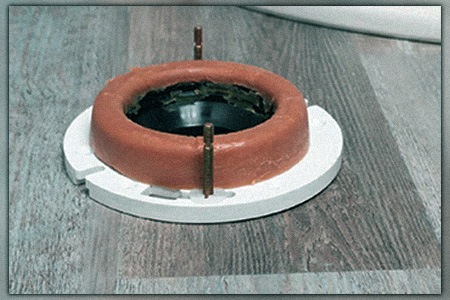
Toilet flange height refers to the distance between the top of whatever types of toilet flange you use and the finished floor, and it is an important aspect of bathroom plumbing that must be properly installed to prevent leaks and wobbling at the base.
Definition & Function
The toilet flange is essential to your bathroom plumbing system, functioning as the connector between your toilet and the waste line. It plays a crucial role in ensuring that waste from your toilet flows smoothly into the sewage system while preventing any unpleasant odors from seeping back into your bathroom.
An improperly installed or poorly maintained flange can lead to issues such as wobbling or leaking at the base of your toilet—a problem no homeowner wants to face. The ideal position for a toilet flange is about ¼ inch above the finished floor surface, allowing it to sit flush with the top.
Consider this the maximum height of a toilet flange above the floor, which is the correct height, too. So should a toilet flange be flush with the floor? No, it should be about ¼ inch above the top surface of the flooring.
Importance of Proper Installation
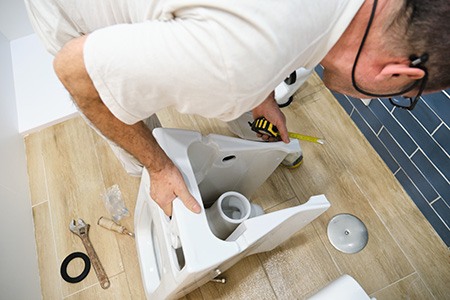
Proper toilet flange installation is essential to ensure a secure and leak-free connection between your toilet and the waste line. A correctly installed flange prevents wobbling or rocking, leading to undesirable leaks at the base of your toilet.
For example, when a toilet is installed with an uneven or misaligned flange height, it creates uneven pressure distribution on the wax ring seal—the primary barrier that keeps water and sewage contained.
This unevenness may cause premature wear-and-tear or even breakage in some cases. In addition to creating unpleasant smells from leaking sewer gases, improperly sealed toilets can lead to costly repairs for flooring and underlying structures due to moisture damage.
Common Problems With Incorrect Flange Height
An improperly installed toilet flange height can lead to several issues that may affect your bathroom plumbing and overall home comfort. One major problem resulting from an incorrect flange height is a wobbling toilet, which occurs when the flange sits too high or low compared to the flooring level.
Leaking toilets are another common issue related to incorrect flange height. A poorly seated wax ring or an uneven flange surface can create gaps for water and sewer gases to escape.
These leaks not only cause unpleasant odors and unsightly water stains around the base but can also damage your flooring installation over time, leading to costly repairs in both plumbing fixtures and flooring materials.
Determining the Right Toilet Flange Height
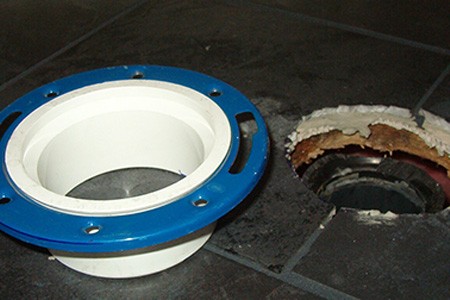
To determine the right toilet flange height, factors such as the type of flooring material and thickness should be considered, along with measuring the distance from the floor to the closet bend and choosing a durable flange material that can withstand regular use.
Factors To Consider
When it comes to determining the right toilet flange height, there are several factors you need to consider. First, take into account the thickness of your flooring. The thickness of the flooring is important because it will determine how high the flange needs to be to ensure a proper seal and connection between the toilet and the waste pipe.
Another important factor is the type of material used for your flange. PVC and cast iron flanges are both popular options, but each has its own pros and cons. PVC is lightweight and easy to work with, while cast iron is heavier and more durable.
Lastly, ensure that plumbing connections are secure by tightening bolts properly and testing for leaks after installation—this can be done with a simple soap water solution applied on joints and tested when bubbles show up, indicating leakage points around close seals, just like in tire puncture tests.
Measuring the Distance
One crucial step in determining the proper height for a toilet flange is measuring the distance from the finished bathroom floor to the center of the waste pipe that comes up through the floor.
This helps ensure that your toilet will be installed correctly and securely. To measure, you'll need a tape measure and a level. Measure from the finished floor to where you think the center of the waste pipe is located, then use a level to determine if it's perfectly vertical or slightly tilted.
If it's tilted, adjust accordingly by trimming down any protruding sections until it's flush with the finished floor. Make sure you consider the toilet distance from the wall, too.
As homeowners opt for DIY home renovations, having this knowledge on how to install toilets properly gives confidence in undertaking plumbing repairs at home without seeking professional help that can cut costs significantly.
Choosing the Right Material
The material you choose for your toilet flange can make all the difference in its durability and longevity. Typically, flanges are made of PVC, cast iron, or copper. PVC is often the most popular choice due to its affordability and ease of installation.
Cast iron is a more durable option that can withstand high levels of pressure and heat without cracking or warping. If you have a heavy or elongated toilet bowl, cast iron may be necessary to provide additional support.
Copper flanges are also an option but are less common due to their higher cost. Choosing the right material will ultimately depend on your specific needs and budget constraints.
Adjusting Toilet Flange Height
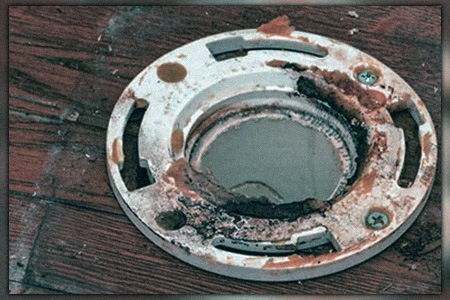
When replacing or readjusting the height of a toilet flange, it is important to properly remove and install the new one. Firstly, turn off the water supply and flush the toilet to empty the remaining water from the bowl.
Unscrew and remove the bolts securing the toilet to the floor before lifting it up and removing it from its position. Next, use a putty knife or other tool to clean any excess wax or debris around the flange opening in preparation for installation.
Place a new flange at an adjusted height into the existing waste pipe with enough space below for a standard ¾ inch wax ring. Use screws or adhesive as directed by manufacturer instructions to secure it firmly in place.
Best Practices for Proper Toilet Flange Height
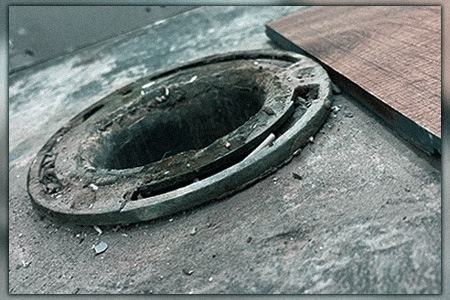
To ensure proper toilet flange height, it's important to have a professional installation and to perform regular maintenance and inspection.
Importance of Professional Installation
Proper toilet flange installation is crucial to prevent leaks and wobbling at the base of a toilet. While DIY projects can be tempting, leaving plumbing work to professionals with the necessary experience and tools is best.
Without professional knowledge, an incorrect installation could result in expensive damage down the line. For example, if the wax ring isn't installed properly or if there are any leaks from the flange after installation, water damage could occur not only under your bathroom flooring but also potentially through the ceiling below.
When installing a toilet flange, professional installers consider all factors, such as floor leveling and choosing quality materials, otherwise you'll need to learn how to shim a toilet. They ensure everything is done correctly to avoid costly repairs and potential hazards in the future.
Additionally, regular maintenance by experienced plumbers ensures the proper functioning of your bathroom fixtures for extended periods without having to undergo additional repair costs due to improper installations or carelessness over time.
Regular Maintenance & Inspection
Regular maintenance and inspection of your toilet flange are essential to ensure its proper functioning and avoid costly repairs or replacements in the future. Inspecting your toilet flange every six months is recommended, especially if you live in an older house with aging plumbing systems.
Another important aspect of regular maintenance is ensuring that there are no leaks around the flange or beneath the flooring. Leaks can cause water damage and mold growth, leading to costly repair bills down the line.
Keep an eye out for any damp spots on your bathroom floor, musty odors, or water stains on ceilings below bathrooms as signs of potential leaks.
Aim for a ¼ inch Toilet Flange Height
By considering factors such as flooring thickness and choosing quality materials, you can ensure a secure fit for your toilet fixture. Remember to always turn off the water before attempting any installation or repair work, and seek professional help if needed. The toilet flange height above the floor should be about ¼ inch so the toilet sits flush.
In conclusion, proper toilet flange height is crucial for avoiding leaks and wobbling at the base of your toilet. Understanding how to measure and adjust the height of a flange can save you time and money in potential repairs down the line.



